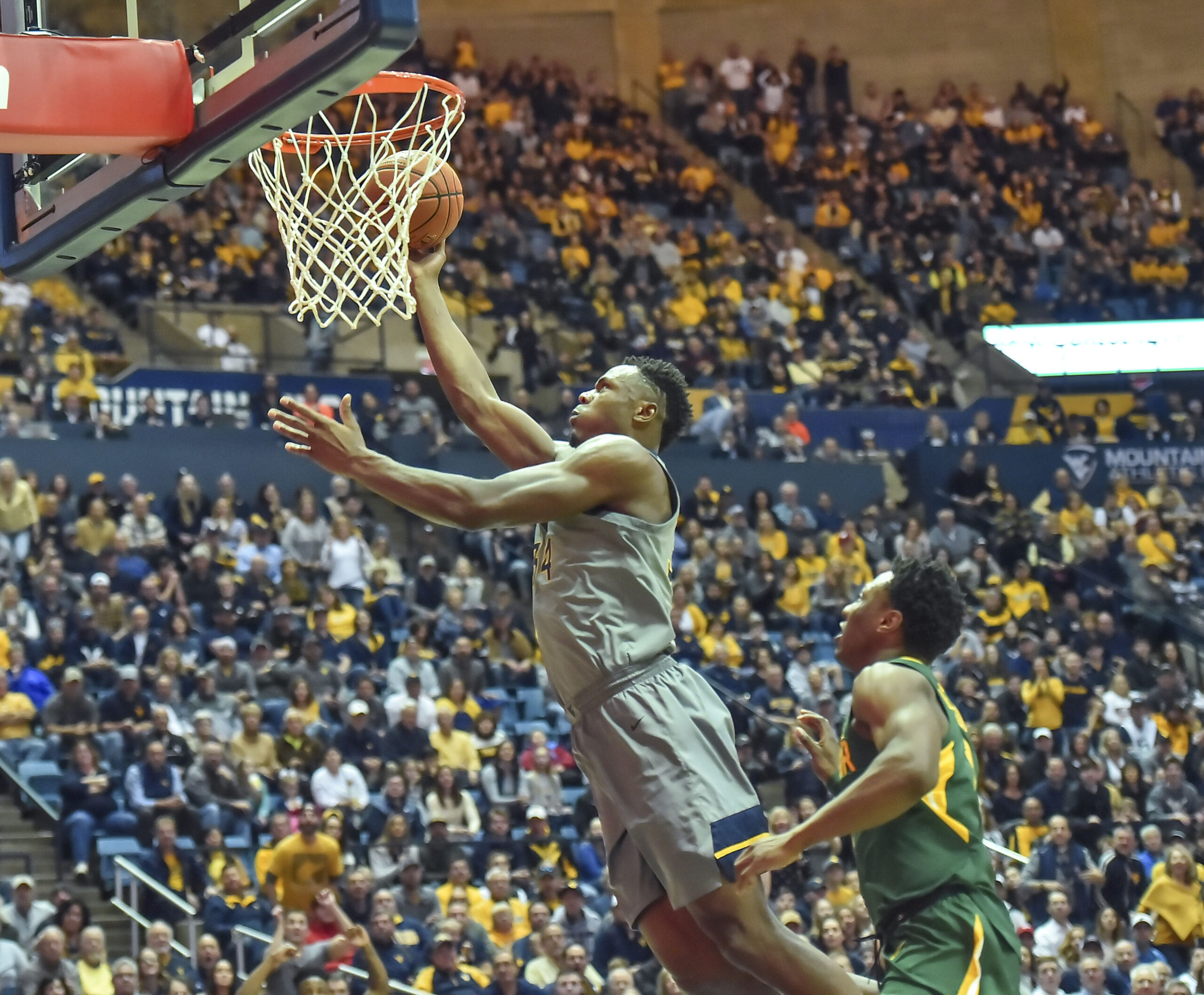MORGANTOWN, W. Va. — There is a spot for Oscar Tshiebwe in the NBA.
It is only a question of when?
That’s what separates West Virginia’s 6-foot-9, 260-pound forward from the previous WVU big guys who tested the waters of the NBA Draft as underclassmen. Tshiebwe announced Wednesday he was putting his name in the 2020 draft, but was also keeping his options open for a return to WVU.
And that should also be the most concerning factor for those who have their fingers crossed that Tshiebwe will return for his sophomore season with the Mountaineers.
We picture the NBA style of play today as a new era of 3-point shooters being king and where everyone is playing as far away from the rim as possible to open up defenses to allow drives at the basket.
We no longer picture it as Patrick Ewing and Hakeem Olajuwon dominating the opposition with a series of power moves in the paint.
It is no longer a league where strong and muscular men like Anthony Mason and Rick Mahorn can carve out long careers.
Those pictures are somewhat deceiving, and while Tshiebwe may be far from the second coming of Ewing, his frame and athleticism are already NBA-ready.
That was never more on display than that night against Texas, when Tshiebwe covered some 30 feet in just seconds to chase down a loose ball and then took one dribble along the baseline and dunked it.
This is where we throw former WVU standouts Kevin Jones, Sagaba Konate and Devin Williams into the mix.
All three played power forward at WVU and had roughly the same measurements as Tshiebwe in college.
Jones, Konate and Williams entered the NBA Draft after their junior seasons. Jones elected to come back for his senior season. Williams and Konate did not.
As talented as Jones and Williams were, neither one would have made that play against Texas like Tshiebwe did.
Maybe Konate could have. Maybe.
And while all three had chiseled physiques and were tenacious rebounders, they faced bigger question marks heading into their pro careers than Tshiebwe.
Jones hit 110 3-pointers over his career, so it was not necessarily a matter of his playing away from the rim.
With Jones, it was a matter of if he had enough foot speed and athleticism to guard in the NBA.
Williams, too, faced similar questions.
Athleticism was not a question with Konate.
Rather it was more about his height — he was measured at 6-6 without shoes at the NBA Combine — which means he was a tad short to be linked to an imposing inside player in the NBA.
He was beginning to show off some 3-point shooting form and outside play at the start of his junior season before his knee injury cut that season short.
We’ll never know how much more Konate could have developed by coming back for his senior year.
As for Tshiebwe, it’s unlikely he’ll face questions about his size, height or athleticism, a major barrier for power forwards who aren’t pushing 7-feet and aren’t outside shooters.
It is only a question of when can Tshiebwe refine the finer points of the game?
Things like getting more comfortable scoring through contact, passing the ball and maybe stretching out a jump shot to 12 or 15 feet.
Tshiebwe does not have to be a 3-point shooter to make it in the NBA, no matter how much the game has changed.
Can he accomplish those things with another season in college? Sure, which is probably the No. 1 reason he should come back for his sophomore year.
But, is it also a possibility that an NBA team falls in love with his athleticism and figures it can develop the rest?
The answer to that is also yes.
So when is the right time for Tshiebwe to go pro?
It’s really easy to say next year, but just don’t be shocked if Tshiebwe keeps his name in the 2020 draft.
TWEET @bigjax3211




